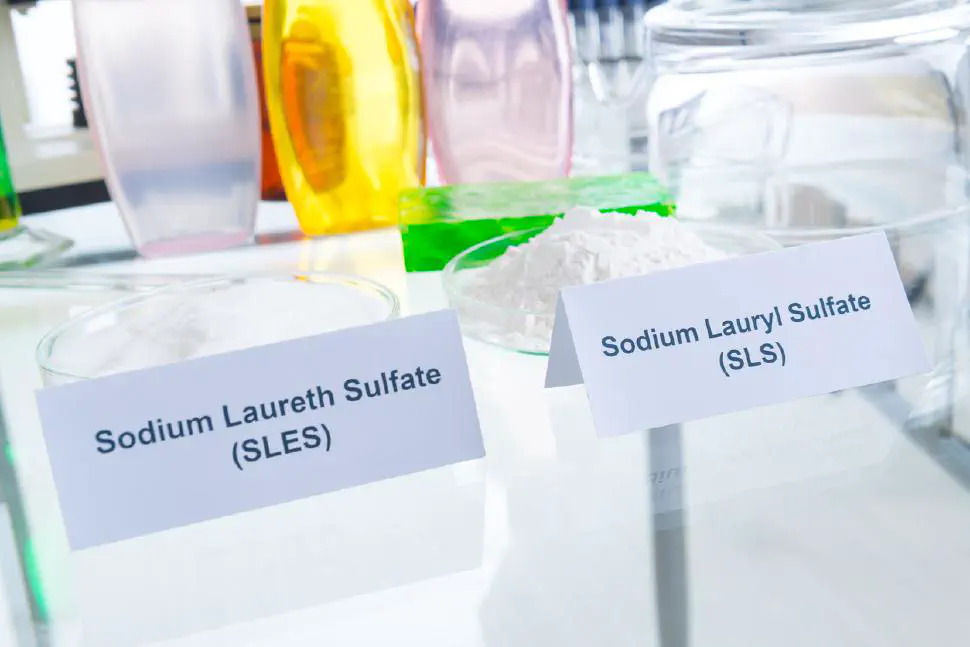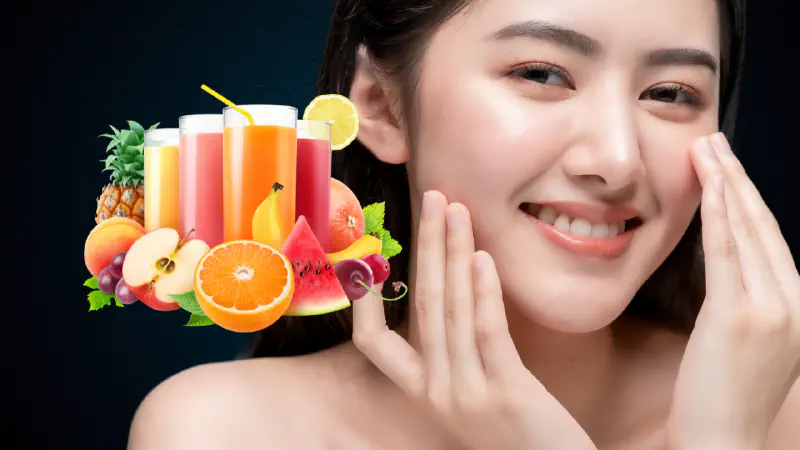In the vast world of shampoos, soaps, and cleansers, the ingredients list can be as perplexing as it is long, often featuring terms like sodium laureth sulfate (SLES) and sodium lauryl sulfate (SLS). These compounds, although similar in appearance and name, hold subtle yet significant differences that can affect not only the product’s performance but also its impact on skin and hair. To the unacquainted, understanding why some prefer one over the other may seem trivial, yet this choice can reflect a growing consumer awareness towards personal care and environmental ethics.
Surfactants, the chemical agents responsible for that satisfying lather in many hygiene products, play a pivotal role. SLS and SLES are key players in this category, frequently found in everything from shampoos to dishwashing liquids. While they both serve similar purposes by reducing surface tension to allow easier spreading and mixing of water and oil, their distinct molecular structures contribute to differing properties and effects.
This article delves into the intricate details that set SLES and SLS apart, examining their chemical compositions, effects on skin and hair, and the rising trend of sulfate-free alternatives in the haircare industry. By exploring consumer preferences and considering environmental ethics, the aim is to guide readers in making informed choices tailored to personal and ecological health.
Understanding Surfactants
Surfactants are essential ingredients in many products. They reduce surface tension, making liquids spread and mix well with other substances. This property allows surfactants to act as powerful cleansing agents. In the beauty and personal care industry, surfactants help beauty products create foam and remove dirt. They trap oils and grime, allowing them to be washed away. Often found in body washes and shampoos, Sodium Lauryl Sulfate (SLS) and Sodium Laureth Sulfate (SLES) are prime examples. Both are used for their foaming and cleaning capabilities, though they differ in strength and potential skin irritation.
Definition of Surfactants
Surfactants assist products in foaming and cleansing when in contact with water. By lowering a liquid’s surface tension, surfactants enable it to spread and emulsify oils. This action is crucial in breaking down dirt, allowing easy rinsing. Many shampoos rely on surfactants, such as sodium lauryl sulfate (SLS) and sodium laureth sulfate (SLES), for effective cleaning. These ingredients are chosen for their ability to clean hair soils and remove product residues efficiently.
Role in Cosmetic and Cleaning Products
Sodium Lauryl Sulfate (SLS) and Sodium Laureth Sulfate (SLES) play significant roles in cosmetic and cleaning products. They enhance the cleansing action by creating foam, which makes removing dirt easier. Although both are effective, SLES is the result of SLS undergoing ethoxylation, a process that makes it milder. This change gives SLES similar lather and cleaning power but with less potential for skin irritation. As a result, products containing SLES can leave the skin softer and more nourished.
Because of its stronger nature, SLS is sometimes linked to skin irritation and other health concerns. It is often avoided in formulations meant for sensitive skin, where SLES is preferred for its gentler effects. Despite this, both ingredients remain popular in personal care items. Understanding their roles can help consumers make informed choices about the products they use daily.
Molecular Structure
Sodium Lauryl Sulfate (SLS) and Sodium Laureth Sulfate (SLES) are both surfactants used widely in cleaning and personal care products. These compounds play crucial roles in enhancing the foaming properties and cleansing effectiveness of various solutions. While their names may sound similar, their chemical structures differ significantly. SLS is typically known to be harsher on skin, causing irritation by compromising the skin barrier. On the other hand, SLES is renowned for being milder due to its specific chemical composition, making it more favorable in products intended for sensitive skin.
Chemical Composition of SLS
Sodium Lauryl Sulfate, also referred to as Sodium Dodecyl Sulfate (SDS), is a powerful surfactant. This compound is produced by treating dodecyl alcohol, usually derived from coconut oil or palm kernel oil, without undergoing the ethoxylation process. Its primary function as a surfactant is to lower the surface tension between ingredients in a product, thus aiding in trapping oil-based dirt for easy removal with water. Because of these properties, SLS is commonly used in personal care products like shampoos and toothpaste, where its ability to generate a rich, foamy lather is beneficial. However, its tendency to cause skin irritation can be a concern, making its inclusion in products a topic for careful consideration.
Impact on Skin and Hair
The ingredients in your beauty and personal care products can have a significant impact on your skin and hair. Sodium Lauryl Sulfate (SLS) and Sodium Laureth Sulfate (SLES) are common surfactants found in many products. These compounds help create the rich lather we associate with cleanliness. However, they can also be a source of irritation, especially for those with sensitive skin conditions. Understanding how these ingredients work and their effects can help you make better choices for your skin and hair care routine.
SLS and Irritation Potential
Sodium Lauryl Sulfate (SLS) is an effective foaming agent used in many cleaning and beauty products. However, it is known to cause skin irritation, which can be particularly concerning for those with sensitive skin or existing conditions like eczema. Studies using patch tests have shown SLS can disrupt the skin barrier, increasing trans-epidermal water loss and leading to dryness. The irritation is often related to its concentration within the product. For example, concentrations of one percent or less are deemed safer for skin application.
Repeated exposure to SLS has been linked to weakened hair strands, increasing the risk of hair loss. People with atopic dermatitis may be more susceptible to skin irritation from SLS, which can compound existing conditions. Though myths have circulated about SLS causing cancer, research highlights skin irritation as the main concern, dependent on product concentration and individual skin sensitivity.
SLES as a Milder Alternative
Sodium Laureth Sulfate (SLES) is often considered a gentler alternative to SLS. It is created through ethoxylation, a process that reduces its potential to irritate skin. This makes SLES a popular choice for personal care products aimed at sensitive skin types. Despite being milder, it retains the lathering and cleansing properties similar to SLS, offering a balanced approach for users.
Though SLES can still cause irritation in some cases, its effects are generally less severe than those of SLS. Users should be cautious about the potential contamination of SLES products with 1,4-dioxane, a byproduct formed during its manufacture. This aspect underscores the importance of scrutinizing labels and ingredient lists to avoid unwanted exposure. Nonetheless, for most users, SLES offers an effective yet gentler cleaning experience compared to harsher surfactants like SLS.
Consumer Preferences
Consumers today are more aware of the ingredients in their personal care products. They often choose products containing Sodium Laureth Sulfate (SLES) over Sodium Lauryl Sulfate (SLS). SLES is favored for its ability to cleanse effectively while being gentler on the skin and scalp. This shift is driven by the perception that SLES maintains the cleansing, foaming, and emulsifying properties of SLS but with a reduced risk of skin irritation.
Many consumers prefer SLES-based formulations, which often leave the skin feeling soft. These products tend to incorporate natural ingredients, adding to their appeal. Concerns over skin sensitivity and hair health are prompting people to avoid SLS, despite its safety endorsements. The trend towards sulfate-free products reflects a broader desire for milder ingredients that are less likely to irritate the skin or damage hair over time. This signifies a growing interest in personal care products that prioritize both efficacy and safety.
Rise of Sulfate-Free Products
Sulfate-free products are becoming popular, especially among those with sensitive skin or conditions such as rosacea. These products minimize irritation, making them ideal for diverse hair types, including curly, kinky, and color-treated hair. Unlike SLS and SLES, sulfate-free formulations emphasize skin nourishment and moisture retention, which can be especially beneficial for delicate conditions.
Sulfate-free shampoo bars and cleansers are designed to be gentle while still providing a thorough cleanse. They often incorporate plant-based ingredients and come in eco-friendly packaging, reducing their environmental impact. While SLS and SLES are effective foaming agents, their potential to cause irritation has led to a demand for alternatives. This shift is not only beneficial for sensitive skin but also reflects a consumer preference for products that are both effective and sustainable.
Importance of Skin Sensitivity
For those with sensitive skin, SLS can be a significant concern. It may cause irritation, especially in individuals with conditions like eczema or dermatitis. Prolonged exposure to SLS might lead to dry and cracked skin, as it can impact skin proteins and the protective outer layer. This makes choosing the right products crucial for those with sensitive skin.
Even though SLS is safe for short-term use, higher concentrations can increase skin sensitivity by causing more water loss through the skin. To avoid potential issues, products containing SLS should not remain on the skin for long, particularly for those prone to irritation. Although regulatory bodies consider SLS safe in controlled applications, the growing awareness of skin sensitivity underscores the importance of selecting products that are formulated with gentle ingredients.
Haircare Industry Trends
The haircare industry is constantly evolving with consumer preferences leaning toward milder and safer products. An example of such development is the increased use of Sodium Laureth Sulfate (SLES) in haircare formulations. SLES is preferred over Sodium Lauryl Sulfate (SLS) because it’s less likely to cause irritation. This shift is driven by a broader awareness of the ingredients consumers use on their skin and hair. Many people now favor products that clean effectively while being gentle on the skin. This trend is reflected in products designed for sensitive skin, emphasizing the importance of maintaining skin health without compromising on cleansing ability.
Popularity of Milder Alternatives
Sodium Laureth Sulfate (SLES) has gained traction as a milder alternative to Sodium Lauryl Sulfate (SLS). Many personal care and cleaning products now include SLES to offer users a gentle but effective foaming and cleansing experience. Companies choose SLES over SLS to cater to consumers concerned about skin irritation. The popularity of SLES is a testament to the growing demand for products that balance cleansing power with skin sensitivity. As consumers become more informed, they increasingly select products that ensure high performance while safeguarding their skin’s health.
Role of Olsson Haircare and Other Brands
Olsson Haircare stands out by avoiding the use of Sodium Lauryl Sulfate (SLS) in its products. This commitment is part of a larger effort to nurture the scalp and enhance hair’s natural shine. By removing SLS, Olsson aims to foster healthier scalp conditions and bolster hair vitality. The products are not only SLS-free but are also enriched with Pro-vitamin B5 which helps rebuild and strengthen hair. Ingredients like Glycerine and Aloe Vera further ensure the hair and scalp remain moisturized and soothed. Other brands, such as I LOVE, have also embraced SLES for its gentler properties. The collective movement by these brands highlights an industry trend toward creating effective, less irritating haircare solutions.
Environmental and Ethical Considerations
Sodium Lauryl Sulfate (SLS) and Sodium Laureth Sulfate (SLES) are widely used in personal care and cleaning products due to their effective cleansing properties. Both these surfactants have been assessed for safety and are considered safe for consumers. Rigorous scientific evaluations ensure they do not cause significant environmental harm. SLS and SLES are known to degrade rapidly, reducing their environmental impact. This characteristic highlights the balance between their effectiveness as foaming agents and their environmental footprint. Furthermore, the transformation of Sodium Lauryl Sulfate to Sodium Laureth Sulfate, through a process called ethoxylation, results in a gentler compound. This makes SLES less irritating, enhancing consumer safety while continuing to protect the environment.
Biodegradability Concerns
Although specific concerns about the biodegradability of Sodium Lauryl Sulfate (SLS) and Sodium Laureth Sulfate (SLES) remain unaddressed in background information, both compounds are recognized for their rapid degradation. This quality limits their environmental persistence and minimizes risks associated with accumulation. Their biodegradable nature allows them to break down in natural environments, ensuring they do not contribute heavily to pollution.
Environmental assessments indicate that SLS and SLES do not pose significant long-term threats due to their ability to decompose quickly. Their safe use in global markets further attests to their low environmental impact. Their biodegradability is one reason behind their widespread approval for use in countless products.
Overall, the importance of biodegradability cannot be overstated as it plays a crucial role in the selection of ingredients used in beauty and household products. These surfactants’ rapid degradation rate ensures their continued approval and acceptance in eco-conscious markets.
Ethical Sourcing of Ingredients
Ethical sourcing of ingredients such as SLS and SLES involves adherence to rigorous safety evaluations and guidelines established by health authorities. Brands often implement sourcing standards that rely on peer-reviewed studies to ensure safety and accuracy. This process involves cross-referencing scientific research and industry regulations to verify consumer and environmental safety.
A key aspect of ethical sourcing is ensuring the chosen ingredients have favorable environmental and toxicity profiles. Companies evaluate these profiles with input from toxicology journals and regulatory bodies. By basing decisions on stringent safety evaluations, brands can maintain high ethical standards without compromising on product safety or efficacy.
Moreover, brands that prioritize ethical sourcing contribute to sustainable practices and consumer trust. By using ingredients that meet environmental guidelines and safety assessments, companies reflect their commitment to ethical practices. This approach not only supports regulatory compliance but also aligns with consumer expectations for responsible and transparent business operations.
Decision-Making Factors for Consumers
When selecting beauty or household products, consumers often consider several factors related to ingredients. Sodium Lauryl Sulfate (SLS) and Sodium Laureth Sulfate (SLES) are common surfactants found in these products. They are known for their ability to create a rich lather. While both SLS and SLES serve this foaming purpose, they differ in their effects on the skin. SLS is known for its potential to irritate sensitive skin, while SLES is generally considered gentler. However, the overall safety of SLS in rinse-off products helps alleviate some concerns. Additionally, both SLS and SLES are biodegradable, minimizing their environmental impact. Consumers with sensitive skin or environmental concerns may weigh these factors when making purchasing decisions.
Skin and Hair Type Considerations
For individuals with sensitive skin, choosing the right product can be challenging. Sodium Laureth Sulfate (SLES) offers a gentler option compared to Sodium Lauryl Sulfate (SLS). SLES undergoes a process called ethoxylation, which reduces its harshness. This makes it a better choice for those with dry or sensitive skin, as it is less likely to strip moisture from the scalp. Products that combine SLES with natural extracts may provide nourishing benefits, leaving hair soft and healthy.
On the other hand, SLS may cause dryness or irritation for some users. This is due to its strong surfactant nature, which can remove oils from the skin and hair. As such, many people with sensitive skin opt for products that prioritize SLES. Ultimately, understanding how these sulfates interact with your skin and hair type can guide you towards products that maintain your scalp’s balance and improve your hair’s texture.
Personal Health Goals
When considering personal health goals, understanding the implications of using products with SLS and SLES is important. While the Australian government classifies SLES as safe for consumer use, potential contamination with 1,4-dioxane, a possible carcinogen, remains a concern. This underscores the importance of choosing carefully-formulated products. Both SLS and SLES can cause skin irritation, influencing decisions for those with sensitive skin.
SLS, in particular, has been linked to dryness and irritation over time due to its effect on skin proteins. This may prompt individuals with conditions like eczema or rosacea to avoid sulfates altogether. Opting for sulfate-free products may aid in managing skin conditions by reducing the risk of irritation. Being mindful of these health-related factors can help consumers make informed choices aligned with their personal health objectives.




